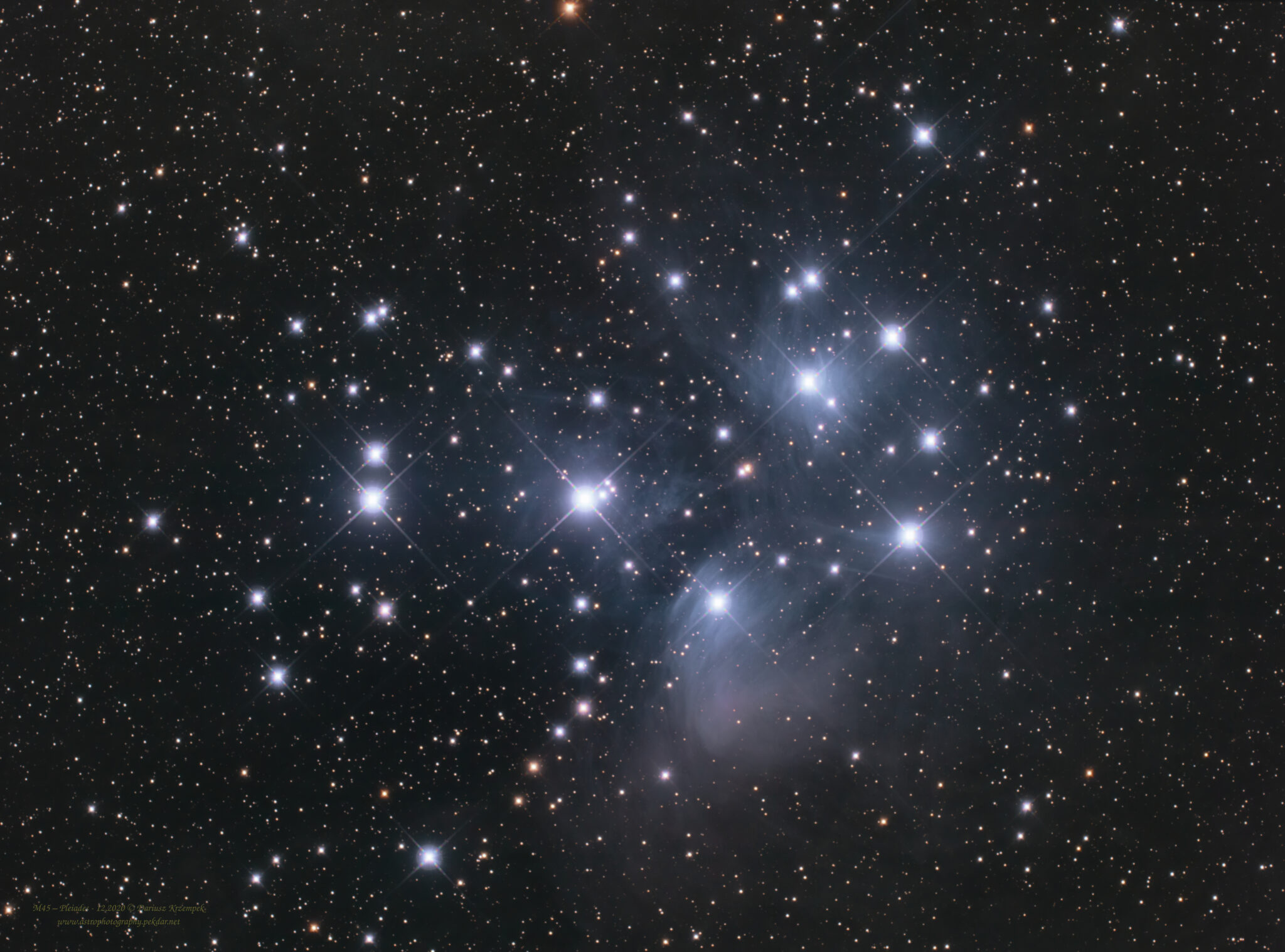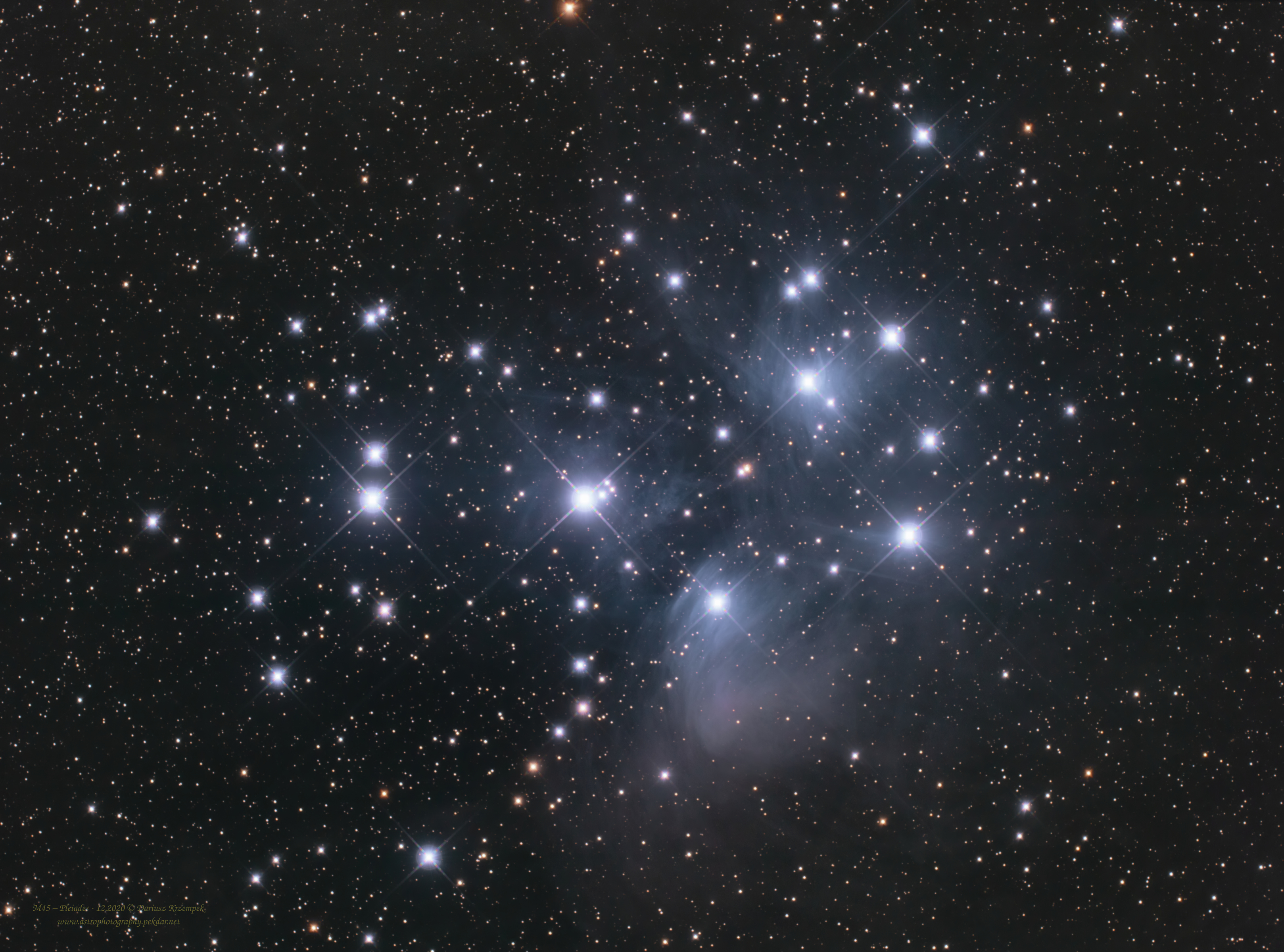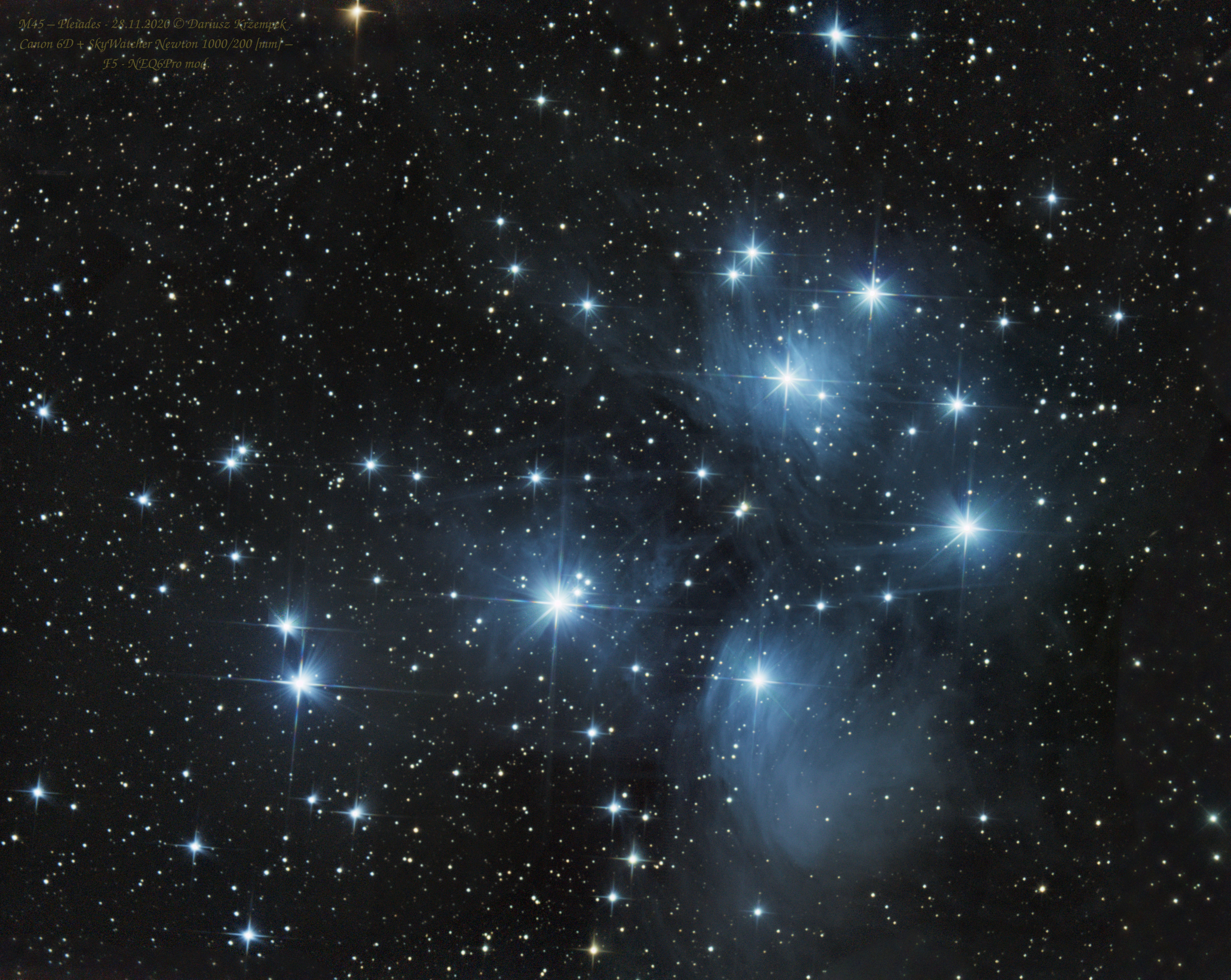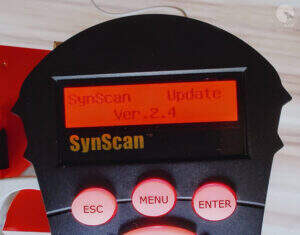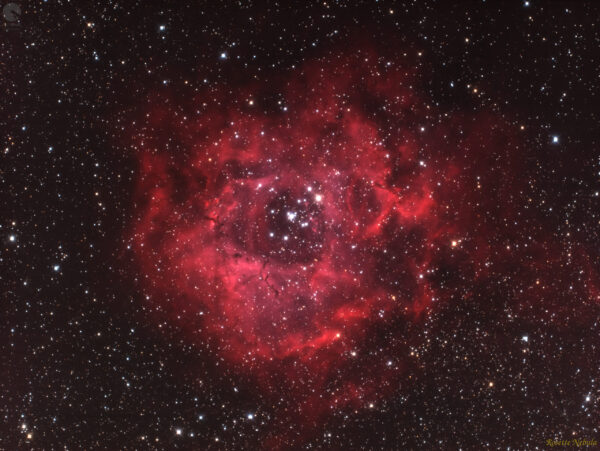M45 Pleiades (Seven Sisters)
is one of the most iconic DSO targets — a young open cluster dominated by hot B‑type stars embedded in a blue reflection nebula. The distance is about 444–445 light‑years, the total brightness ~1.6 mag, and the apparent size ~2° (~4 Moons). It sits in Taurus, best observed from late autumn to winter.
The cluster is dominated by hot blue and luminous stars that have formed within the last 100 million years. Reflection nebulae around the brightest stars were once thought to be left over material from the formation of the cluster, but are now considered likely to be an unrelated dust cloud in the interstellar medium through which the stars are currently passing.
Object: key facts
- RA/Dec (J2000): ~03h 47m, +24° 07′ (Taurus).
- Distance: ~444–445 ly (Gaia/HST; literature varies slightly).
- Age: ~100 Myr (range 75–150 Myr depending on method).
- Size & mag: ~2° across; ~1.6 mag.
- Reflection nebulae: NGC 1432 (Maia) and NGC 1435 (Merope); the dust is unrelated to the cluster’s formation — the stars are passing through an interstellar cloud.
- Evolution: the cluster will disperse in ~250 Myr due to galactic interactions.
New research (2025): Using TESS + Gaia, astronomers identified a Greater Pleiades Complex — a dispersed family of >3,000 related stars spanning ~1,900 ly, tripling the known membership context. This doesn’t change the visual M45 appearance but reframes cluster dynamics.
Two captures — what they show
Capture A
- Integration: 5 h 56 min net (several sessions; ISO 1600 + 1000; one session without Flats).
- Processing: APP + RT + GIMP; multi‑session merge → small mosaic; harder calibration but greater dynamic range and dust detail around Alcyone/Maia/Merope.
- Composition: Astro Pixel Processor,
- Processing: RT + GIMP + plug-ins (Linux),
- Total exposure time minus defective lights: 5h56 min. ISO 1600 + 1000
- Calibration frames (one missing session): Flat, DarkFlat, Bias
Capture B (multi‑session mosaic, 2019)
- Shows a different composition and nebulosity emphasis (e.g., Merope Nebula / NGC 1435, or the Atlas–Pleione pair in the “handle”). Useful to compare chroma/halo control around brightest stars.
- Nebula context per star: NGC 1432 (Maia), NGC 1435 (Merope), vdB 23 (Alcyone); tiny IC 349 near Merope.
Computer simulations have shown that the Pleiades were probably formed from a compact configuration that resembled the Orion Nebula. Astronomers estimate that the cluster will survive for about another 250 million years, after which it will disperse due to gravitational interactions with its galactic neighborhood.
Astrophotography tip
M45 is easy to overexpose. Use shorter subs for wide fields (halo control) or longer integration at higher focal length to pull delicate reflection dust. Prefer no LP filter; balance color carefully; stretch gently.
How to find & when to shoot
M45 sits in Taurus; from mid‑northern latitudes it’s best in December (high altitude, good contrast). It’s bright enough to be seen with the naked eye even under moderate light pollution.
Curiosities
- “Golden Gate of the Ecliptic”: with the Hyades, Pleiades frame a classic ecliptic gateway.
- Subaru: in Japanese the cluster is Subaru — hence the car logo.
- Mythology: the Seven Sisters (Alcyone, Maia, Merope, Electra, Taygeta, Celaeno, Sterope), with Atlas and Pleione.
References:
- https://science.nasa.gov/mission/hubble/science/explore-the-night-sky/hubble-messier-catalog/messier-45/
- https://en.wikipedia.org/wiki/Pleiades
- https://www.astropixels.com/openclusters/M45-A01.html
- https://messier.lamost.org/seds/seds.org/messier/en/more/m045_tab.html
- https://science.nasa.gov/missions/tess/nasas-tess-spacecraft-triples-size-of-pleiades-star-cluster/

